In Spring Breakers, Harmony Korine has finally given us something to talk about again. Galeries has taken advantage of this new momentum by devoting a retrospective to the controversial director who gave us cult films like Gummo and Julien Donkey-Boy, but for a while seemed to be lost to us.
Legend has it that Harmony Korine was skateboarding with some friends in a park in New York when he spotted the well-known photographer Larry Clark and showed him his screenplay. Clark was impressed and asked the youngster to come up with a screenplay about skateboarding teenagers that would include a story line about AIDS. That eventually turned into Kids (1995), a visually powerful, amoral, but true-to-life portrait of Nineties youngsters spending their time doing drugs, scrounging, drinking, and infecting each other with AIDS. Even a girl who was still a virgin and was as beautiful as Chloë Sevigny.
Harmony Korine: resurrection of an iconoclast
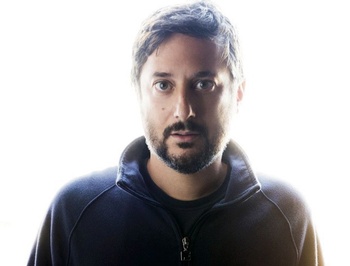
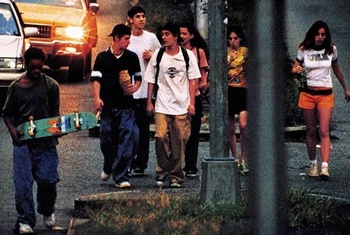
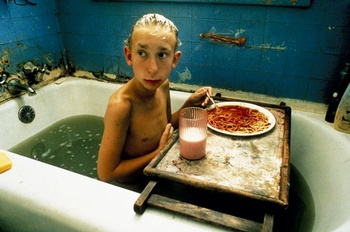
(Kids / Gummo)
Kids caused quite a stir. In 1997 Korine came up with an equally sensational and even wilder portrait of white-trash kids fighting boredom by walking around half-naked with rabbits’ ears, pulling sticking plasters off nipples, and eating spaghetti with chocolate in the bath. Mainstream audiences found Gummo too raunchy, too weird, too voyeuristic, and too innovative. The little group of those who see Korine as a genius, however, includes Larry Clark, Werner Herzog, and Bruce La Bruce.
In Julien Donkey-Boy (1999), the young, ultra-ambitious iconoclast gave us a Dogma-style film about a schizophrenic young man. Once again, the film was anything but perfect – the storyline was extremely confused and the film was often gratuitously experimental or arty, but those who like rebellious, idiosyncratic, bewildering cinema loved it. After that, the light went out. Larry Clark filmed his screenplay for Ken Park (2002).
Kids caused quite a stir. In 1997 Korine came up with an equally sensational and even wilder portrait of white-trash kids fighting boredom by walking around half-naked with rabbits’ ears, pulling sticking plasters off nipples, and eating spaghetti with chocolate in the bath. Mainstream audiences found Gummo too raunchy, too weird, too voyeuristic, and too innovative. The little group of those who see Korine as a genius, however, includes Larry Clark, Werner Herzog, and Bruce La Bruce.
In Julien Donkey-Boy (1999), the young, ultra-ambitious iconoclast gave us a Dogma-style film about a schizophrenic young man. Once again, the film was anything but perfect – the storyline was extremely confused and the film was often gratuitously experimental or arty, but those who like rebellious, idiosyncratic, bewildering cinema loved it. After that, the light went out. Larry Clark filmed his screenplay for Ken Park (2002).
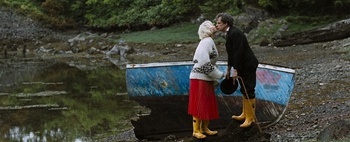
(Mister Lonely)
But for new work from Korine himself we had to wait until Mister Lonely (2007) and Trash Humpers (2009), which were as bizarre as his earlier work but had something nonchalant about them and were, as a result, less interesting. At the time, talking about the black hole in his filmography, Korine told AGENDA: “After Julien Donkey-Boy I lost interest in things. I became disconnected; I had no hold on life any more. I was surrounded by people I didn’t like: treacherous people, bullshitters. I reckoned: if those are my supposed friends, then I must be like that too. I had to take a step back. I left film and film left me.”
A pop gloss
Spring Breakers has put Korine back in the public eye. To his delight, he finds that his old films are now more popular than when they were made. “It surprises me,” Korine told us by phone. “I have been making films for twenty years: why all this interest now, all of a sudden? It’s like people have caught up. Over the last ten, fifteen years, my films have become more popular. As if people only started to understand what I was trying to do after a few years.” He doesn’t want to stay stuck in the underground. “Spring Breakers has actors with a lot of visibility, like Selena Gomez, Vanessa Hudgens, and James Franco. It would be wonderful if we could get a lot of people to come and see it. It would make it easier for me to get funding and I could get started on new films sooner.”
But for new work from Korine himself we had to wait until Mister Lonely (2007) and Trash Humpers (2009), which were as bizarre as his earlier work but had something nonchalant about them and were, as a result, less interesting. At the time, talking about the black hole in his filmography, Korine told AGENDA: “After Julien Donkey-Boy I lost interest in things. I became disconnected; I had no hold on life any more. I was surrounded by people I didn’t like: treacherous people, bullshitters. I reckoned: if those are my supposed friends, then I must be like that too. I had to take a step back. I left film and film left me.”
A pop gloss
Spring Breakers has put Korine back in the public eye. To his delight, he finds that his old films are now more popular than when they were made. “It surprises me,” Korine told us by phone. “I have been making films for twenty years: why all this interest now, all of a sudden? It’s like people have caught up. Over the last ten, fifteen years, my films have become more popular. As if people only started to understand what I was trying to do after a few years.” He doesn’t want to stay stuck in the underground. “Spring Breakers has actors with a lot of visibility, like Selena Gomez, Vanessa Hudgens, and James Franco. It would be wonderful if we could get a lot of people to come and see it. It would make it easier for me to get funding and I could get started on new films sooner.”
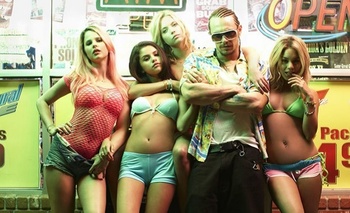
(Spring Breakers)
Those big names didn’t prevent Korine being visually experimental. Spring Breakers turns out to be a fine piece of subversive pop art. It looks like a very expensive film that has been subject to extensive reworking – but it isn’t. “Just about nothing was reworked afterwards. All those ‘effects’ are things we shot with the camera. Even those confectionery colours. I was looking for a pop gloss: I wanted the film to look like confectionery, as if we had lit it with boiled sweets and jelly babies. I worked closely with the Brussels cinematographer Benoît Debie. I’m a good friend of Gaspar Noé [the French director who made Irréversible and Enter the Void – NR] and he just kept on praising Debie’s work to the skies. I became a fan. Debie is incredibly creative, almost a painter. That was necessary, too. Spring Breakers had to be inventive and attractive and strange. No other film could be used as a point of reference.”
Retrospective Harmony Korine • 14/3 > 30/5, Galeries, Koninginnegalerij 28 galerie de la Reine, Brussel/Bruxelles, 02-514.74.98, www.galeries.be
> READ THE SPRING BREAKERS REVIEW
Those big names didn’t prevent Korine being visually experimental. Spring Breakers turns out to be a fine piece of subversive pop art. It looks like a very expensive film that has been subject to extensive reworking – but it isn’t. “Just about nothing was reworked afterwards. All those ‘effects’ are things we shot with the camera. Even those confectionery colours. I was looking for a pop gloss: I wanted the film to look like confectionery, as if we had lit it with boiled sweets and jelly babies. I worked closely with the Brussels cinematographer Benoît Debie. I’m a good friend of Gaspar Noé [the French director who made Irréversible and Enter the Void – NR] and he just kept on praising Debie’s work to the skies. I became a fan. Debie is incredibly creative, almost a painter. That was necessary, too. Spring Breakers had to be inventive and attractive and strange. No other film could be used as a point of reference.”
Retrospective Harmony Korine • 14/3 > 30/5, Galeries, Koninginnegalerij 28 galerie de la Reine, Brussel/Bruxelles, 02-514.74.98, www.galeries.be
> READ THE SPRING BREAKERS REVIEW
Read more about: Film
Fijn dat je wil reageren. Wie reageert, gaat akkoord met onze huisregels. Hoe reageren via Disqus? Een woordje uitleg.